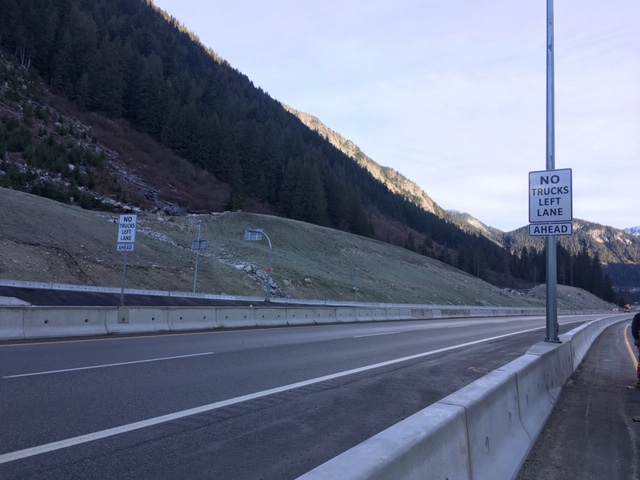Truck restrictions make the Coq safer
VANCOUVER, B.C. – Restrictions imposed on commercial vehicles on British Columbia’s Coquihalla Highway have helped reduce winter closures on the province’s busiest mountain pass, the Ministry of Transportation and Infrastructure said late Tuesday.
There were 11 closures on the highway last winter, compared to 27 in 2017-18, the ministry said.

“Enhanced chain regulations and the ‘No Trucks in Left Lane’ pilot program have both made positive impacts on the safety and reliability of the Coquihalla Highway,” the ministry said in an email to Today’s Trucking.
The province said it implemented several initiatives aimed at improving the reliability of its highways following the “challenging winter of 2017-18”.
But the ministry stressed that comparing seasons is very difficult.
That is because the severity of winter is made up of numerous variables such as the snowfall amount, number of storms, temperatures and wind, which are different from year-to-year, the ministry said.
The “No Trucks in Left Lane” was initially applied to the most treacherous part of the highway. It has since been expanded to other sections.
“Positive feedback has been one of the largest driving forces for the expansion of the pilot program to other locations along the Coquihalla Highway.

When extreme weather is forecast on the Hope to Merritt section of the Coquihalla, the ministry and the local maintenance contractor implement what is referred to as the Coquihalla Snowshed Protocol.
The protocol has been in place for many years.
“Under the Snowshed Protocol, our contractor deploys additional resources to the area, and hires a tow truck to be on standby in case a commercial vehicle spins out,” the ministry said.
The protocol comes into force when more than 15 centimeters of snowfall over a 12-hour period is predicted for the Snowshed corridor, according to the ministry’s website.
“Its sole purpose is to make sure we can maintain safe and uninterrupted travel through the corridor during heavy snowfall or other challenging weather event.”
Last winter, the protocol was implemented 11 times, the ministry said.
Have your say
This is a moderated forum. Comments will no longer be published unless they are accompanied by a first and last name and a verifiable email address. (Today's Trucking will not publish or share the email address.) Profane language and content deemed to be libelous, racist, or threatening in nature will not be published under any circumstances.